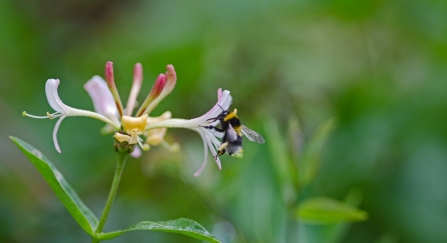Spring is fast approaching, and green-fingered gardeners will be dusting off their gloves and starting to think about which plants will brighten up their borders in the months ahead.
If you are among them, you might consider plants that could benefit local wildlife before heading to the garden centre. Gardens are extremely important for a huge number of species, providing food and shelter for a wide range of plants and animals. Even small gardens can make a real difference for wildlife with pots, planters and window boxes.
Choose nectar rich plants, and butterflies and bees will be encouraged into your garden to feed. Aubretia, primroses, foxgloves, sweet violets, cornflowers, knapweeds, valerian and sweet scabious are all excellent choices.
Herbs such as marjoram, fennel, lavender, thyme and mint are also popular with a great range of insects. You can also buy plants that produce nectar in the evening, such as honeysuckle and evening primrose. These provide an energy-rich snack for visiting moths and other insects that are active at night.


